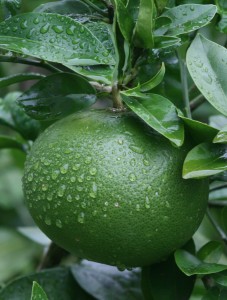
Late winter is the best time to start preparing breeding habitats (misleadingly called “bee hotels”) for native solitary bees and wasps before they hatch in late spring. These insects are important pollinators, in some cases more efficient than honeybees because of their ability to buzz-pollinate, so if you want to have more tomatoes, capsicums and eggplants, make sure you attract the native helpers!
Because solitary bees do not have such extensive foraging range as the honeybees, if you create shelters and food sources for them in your garden, this is where they will prefer to stay. To do this successfully you would need to know how to make man-made habitats attractive to the bees.
Different species build their nests in different places: in the ground, inside dried, empty plant stalks, in borer holes in tree stumps and in cracks in sandy cliffs. Each species needs holes of certain size and depth to attract them and this is what you should know when constructing breeding sites.
I usually start making solitary bee habitats with the perforated clay/sand “bricks”. These habitats need to be made well in advance, because it takes a long time for them to fully dry out, so I make them in late winter. I also drill holes of various diameter in large blocks of hardwood, which attract resin bees and various solitary wasps. In both cases the holes must be “blind”, that is, not be drilled all the way through the clay or wood.

These habitats should be placed around the garden in sunny and sheltered spots, but do not install too many of them together to avoid easy spread of diseases and pests preying on the insects you want to attract to your garden.
Making habitats from a clay and sand mix (you can also use rammed earth):
What you need:

Clay: I usually get clean clay from people who excavated it from their gardens. It is important that you check if the area the clay comes from is not affected by heavy metal poisoning and has no asbestos residue.
Sand: Any sand will do as long, as it doesn’t contain too many pebbles.
Moulds: Milk and juice cartons make very good moulds, but you can also fill concrete or terracotta pipes or hollow concrete blocks with the clay/sand mixture and leave it there.
Method:

Mix the clay with water in a bucket, let it sit overnight, then agitate until most lumps are broken apart.
Strain through a compost sieve to remove stones and remaining lumps of clay. You should finish with a thick, smooth slush.
Add to the clay the same volume of sand and mix thoroughly. It should be the consistency of playdough, not too wet, and stick well together.
Pack the mixture into the moulds or pipes/blocks. Do not fill the latter to the brim but up to 4 cm from the top. When laid on the side this will create overhangs to protect the nests from the rain.
Use a stick to poke holes in the bricks about 6-8 mm in diameter and 6-8 cm deep to create leader holes which the bees will excavate further. Do not place the holes in perfectly symmetrical patterns, as this can confuse the bees trying to return to their own nesting holes!

Leave the clay habitats in a dry spot, protected from the elements, they should dry out in about 6-8 weeks. If you used carton moulds, tear them off after two weeks to allow sides of the brick to dry.
Install the habitats in the garden:
Terracotta and concrete pipes or blocks filled with the clay or rammed earth do not need protection from the rain and can be laid on the ground but raise them on pavers to prevent flooding and rising damp.
Clay bricks made in carton moulds would need to be protected from rains and could be either placed in waterproof boxes with a small roof over them or put on covered balconies or decks. I had several blocks in an open garden shed and before I thought about where to place them the bees found the nesting spots there!

Now you have nurseries for the pollinators, do not forget to grow flowering plants for them.
Common herbs: basil, chives, dill, fennel, hyssop, lavender, lemon balm, mint, oregano, rosemary, rue, sage, savoury and valerian are all good sources of food for the bees. Flowers of borage are high in sugars and proteins as is alyssum. Let some of your vegetables to flower and appreciate the value of so called “weeds” such as clovers and dandelions as bee food.

(You can also hear me talking about habitats for native bees in this podcast recorded for The Real World Gardener segment on the Community Radio Network)

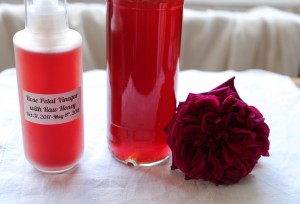


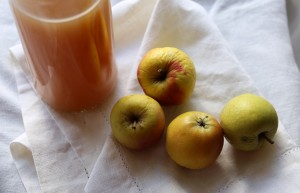
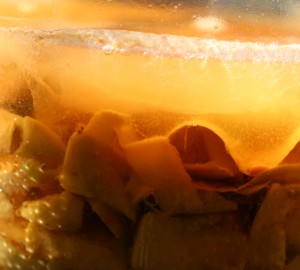
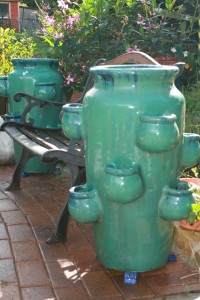

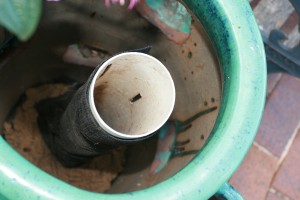
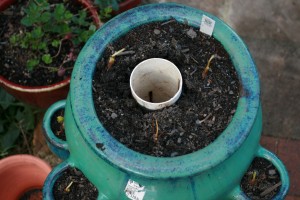

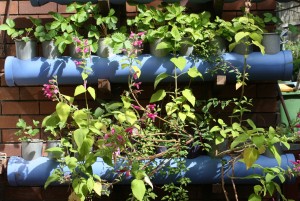

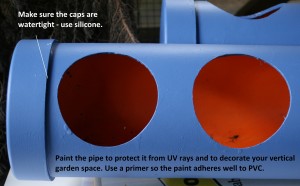


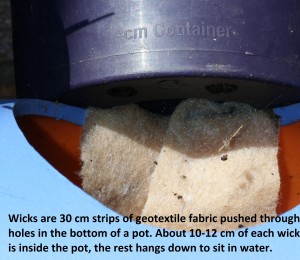
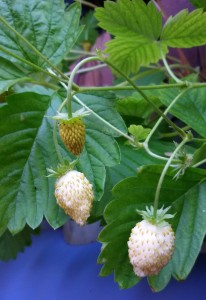
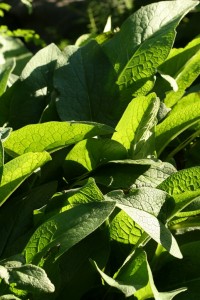
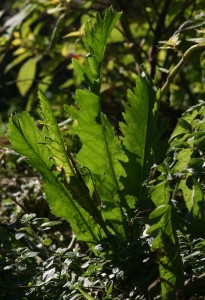


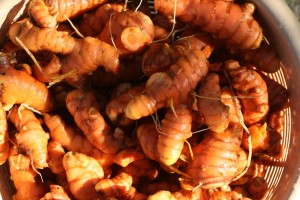
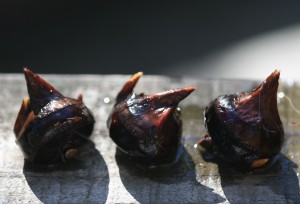
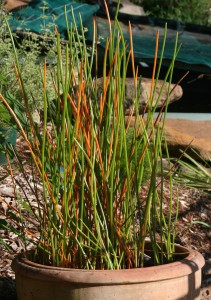

 Yesterday I harvested various edible and medicinal roots and corms. I am always amazed by the abundance of food I get from a few pieces of roots or a pinch of seeds. Two small pieces of turmeric I planted formed two huge bunches of bright orange, finger-shaped knobs. A couple of water chestnuts grown in a styrofoam box became 1 kg of nuts. Three small slips from a sweet potato plant are now 5 kilograms of pink-orange goodness.
Yesterday I harvested various edible and medicinal roots and corms. I am always amazed by the abundance of food I get from a few pieces of roots or a pinch of seeds. Two small pieces of turmeric I planted formed two huge bunches of bright orange, finger-shaped knobs. A couple of water chestnuts grown in a styrofoam box became 1 kg of nuts. Three small slips from a sweet potato plant are now 5 kilograms of pink-orange goodness.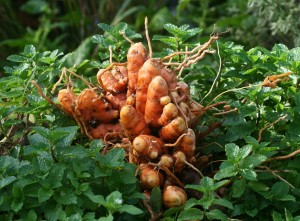 Fresh turmeric is not only great looking, but is also a very strong anti-inflammatory, anti-oxidant and cancer prevention medicine. You can use it together with other seasonal winter crops (such as grapefruit, lemon or ginger) to make fantastic tonics to alleviate symptoms of arthritis and to protect yourself from winter colds.
Fresh turmeric is not only great looking, but is also a very strong anti-inflammatory, anti-oxidant and cancer prevention medicine. You can use it together with other seasonal winter crops (such as grapefruit, lemon or ginger) to make fantastic tonics to alleviate symptoms of arthritis and to protect yourself from winter colds.
